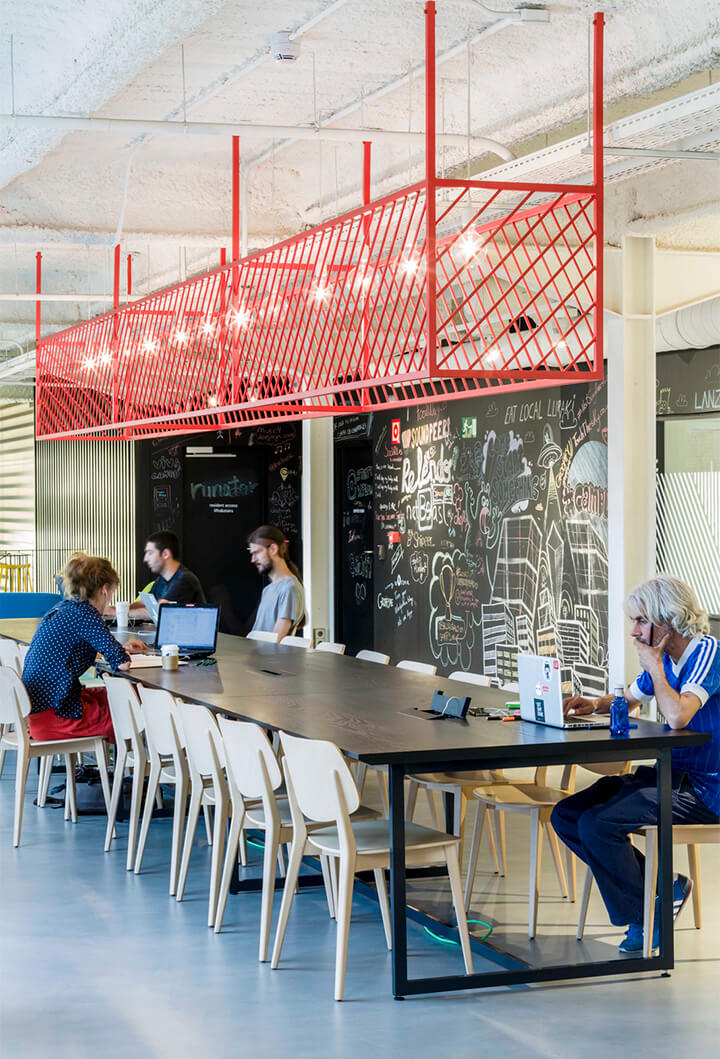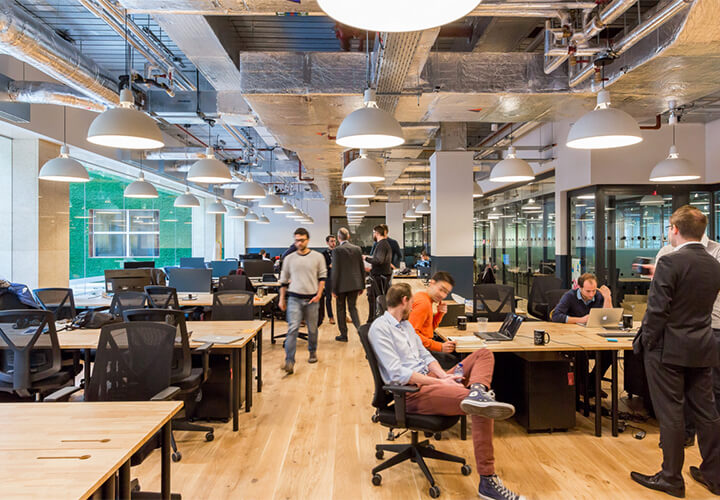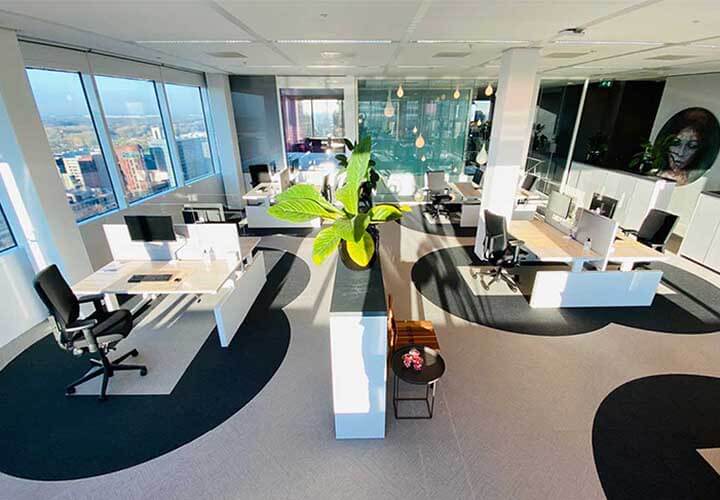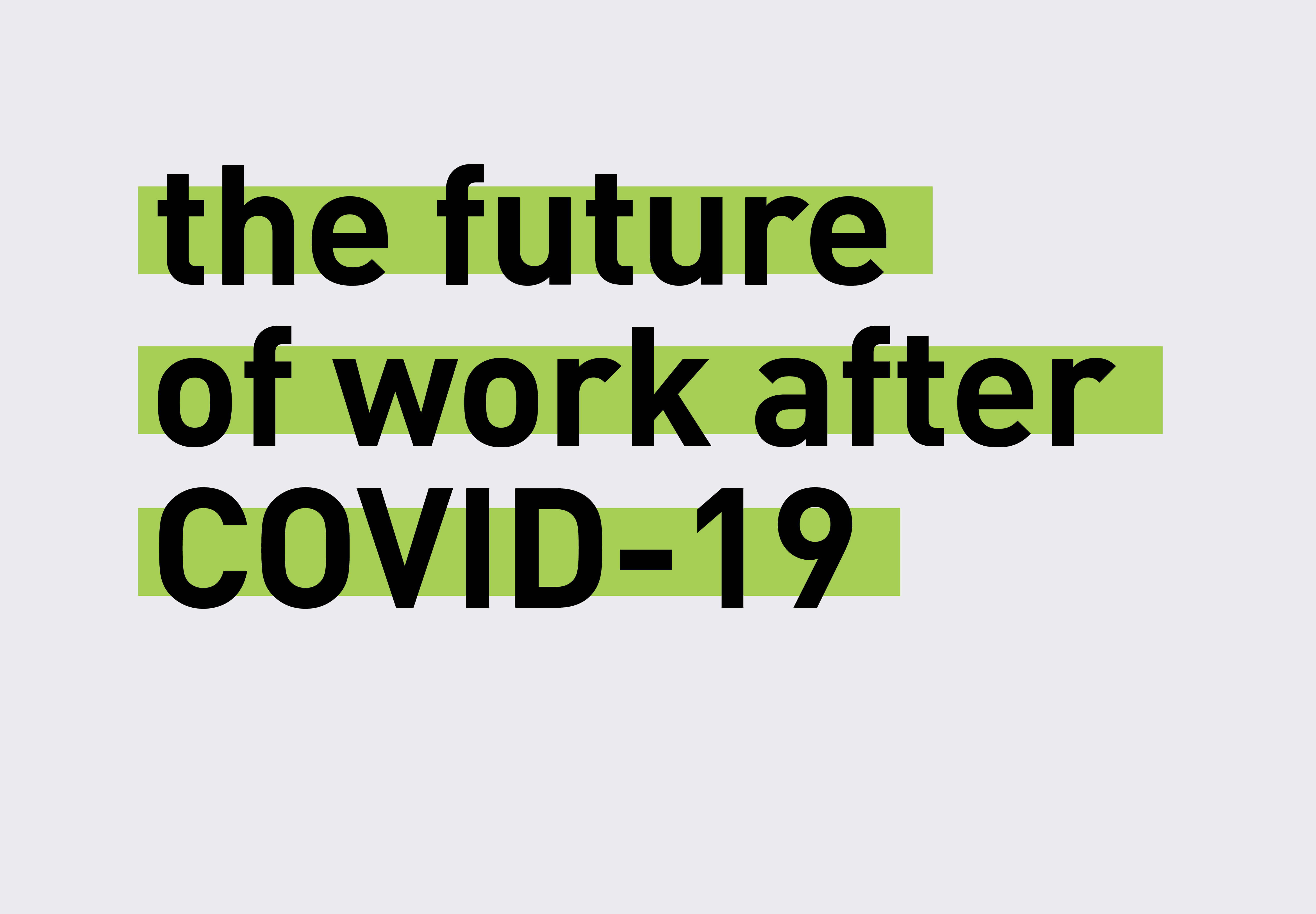As a studio that specialises in designing branded workplaces, we know there are likely to be long-lasting changes to the way offices are designed long after the war on COVID-19 is won.
We’re in the midst of a huge, global work-from-home experiment – and when the world returns to normal, our approach to designing offices may never be the same again.
Before the virus struck, many employers were reluctant to allow team members to work from home full-time. Would productivity slump? Could people be trusted to work a full eight-hour day? Now that many of us are working from home, it’s possible that COVID-19 is showing us a better way to work.
Around the world, employees and employers alike are experiencing the benefits of WFH firsthand. Without long commutes, productivity and job satisfaction are up. In some ways, we’re closer because we’re meeting each other’s pets and families, albeit virtually. With fewer face-to-face meetings and inter-state flights, carbon emissions are down, too.
There’s plenty we miss, but this global WFH experiment looks to be a success – and the implications for experiential graphic designers are huge.
How will workplaces change when we return to work?
When it’s safe to return to work, many people will still feel anxious about the safety of their workplaces. Employers will need to enable physical distancing, which means more walls and privacy panels, more spacious desk layouts, fewer communal areas, and a move away from hot desking.
They will also use wayfinding cues and environmental graphics to remind people to keep their distance. Commercial real estate services firm Cushman & Wakefield is already testing a concept called ‘Six Feet Office’ in its Amsterdam headquarters. It spent one week rapidly redesigning its office with properly spaced desks encircled by black carpeted patterns to ensure colleagues don’t stand too close (pictured below). It’s also using signs and floor markings to prevent congestion by creating lanes around the office.
“[We’re] using design to nudge behaviour,” Cushman & Wakefield’s Despina Katsikakis told Fast Company. “And part of this is, how we shift very ingrained behaviours and expectations of how we work.”
Things to consider when redesigning your office post COVID-19
It’s impossible to know how soon we’ll return to our workplaces, but employers and facility managers will need to make some changes very quickly. Simple changes include spacing out furniture, using screens and cubicles to contain the spread of germs, using visual cues to encourage social distancing, or keeping employees at home part-time to de-densify the workplace. If people continue to work from home just one day per week, it could equate to a 16% lower carbon footprint, according to TechRepublic.
Some of the trends made popular by co-working spaces are likely disappear, at least for now. Privacy booths offer quiet havens away from open-plan desks, but these days they’re likely to be seen as tiny contamination containers. We may need to rethink communal desks and lounge areas, given they encourage large groups to congregate. And we’ll continue to be inspired by residential design cues to create offices that feel like a ‘home away from home’.
Longer-term, designers may need to consider materials with antimicrobial properties woven into them. Copper is a good choice for signs and fixtures given its anti-bacterial and anti-fungal properties, but we may even take inspiration from innovations found within healthcare environments. In future, expect more automation and voice-activation to avoid having to touch doors, buttons and handles, and digital wayfinding that enables more flexible floorplans.
Of course, working from home, or from 9 to 5, isn’t for everyone – we all need to think about new ways of offering flexibility, while accommodating different work styles. From less crowded floorplans to greater investment in cloud-based tools, everything may need to be rethought. If you’re not sure where to start, we’re always happy to share our thoughts on designing safe, future-proofed branded workplaces that use wayfinding cues to encourage social distancing. Send us a note via [email protected]



